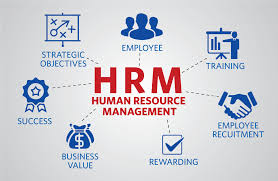
Assistant Human Resources Manager legalities
Order Instructions:
B L Assignment Grade Rubric
Assignment 1: Good Grocers, Inc.
Due Week 6 and worth 150 points
Note: The company mentioned herein is merely a hypothetical organization with characteristics developed to enable students to respond to the assignment. You may create and / or make all necessary assumptions needed for the completion of this assignment.
After Good Grocers, Inc. expanded its organic produce section and adopted a “buy local” policy, sales increased. The Virginia-based chain expanded its retail locations from seven to twelve (7 to 12) over the last three (3) years.
As the Assistant Human Resources Manager, your job is to advise store managers about legal and personnel matters. The leadership at Good Grocers, Inc. considers you to be a legally astute manager, who consults with the corporation’s attorney, as necessary. The corporation’s leadership has tasked you with managing two (2) situations have come across your desk. Please respond with support that is backed by the law.
Write a three to four (3-4) page paper which addresses the two (2) situations from two (2) store managers.
Situation 1
Last week, my produce manager reported the following incident:
As I came out from the bakery, I saw a woman lying on the floor of the produce department. Her husband started yelling at me, saying, “She slipped on a banana peel and fell. My wife is the anchorwoman for NEWSNOW, and we are going to sue you!”
She didn’t look hurt, but I called 911 and filed an incident report that contained the facts of the situation. When viewing the area, I did, in fact, see a banana peel on the floor, but it was still yellow and lying on top of a ribbed rubber mat. The woman in question was wearing five-inch high heels. But I wasn’t sure what to say, other than the woman would be hearing from us.
1. Explain whether this situation is best handled by litigation or by a particular form of alternative dispute resolution.
2. Based on how you would handle this situation, either through litigation or a particular form of alternative dispute resolution, outline the key next steps involved in seeking a resolution. Justify your response.
Situation 2
Last week, my bakery manager was short an employee over Mother’s Day weekend when the bakery is always busy. To make up for being shorthanded, the bakery manager called in Ms. Greene, an independent contractor. Generally, Ms. Greene comes in on Monday, Wednesday, and Friday nights between 6 to 9 p.m. just to decorate cakes; she has her own bakery business. We furnish all of her equipment, and we pay her by the cake.
Ms. Greene worked eight (8) hours on Saturday and another eight (8) hours on Sunday over Mother’s Day weekend. We paid her $15.00 per hour. On the following Monday when Ms. Greene came in, she told me that she wanted to receive the same benefits as the other Good Grocers part-time employees, LEG 100 – Assignments and Rubrics such as paid time off and employee discounts. Ms. Greene asserted that she really is a part-time employee who deserves the usual employee benefits.
3. Determine whether Ms. Greene is an independent contractor or a part-time employee. Provide a rationale for your response.
4. Explain the reasoning supporting whether or not Ms. Greene should receive the same benefits as part-time employees.
Suggested resources for this assignment:
1. Access your Learning Resource Center (LRC) at the top of your iCampus screen. Search by keyword for business articles on arbitration, mediation, or independent contractors. You may also use your LRC to access legal topics and articles through the Lexis Nexis database.
2. At FindLaw, located at http://www.findlaw.com/, you may search by legal topic or enter a keyword(s) into a search box to find relevant information and articles.
3. You may use the following additional resources:
• Internal Revenue Service (IRS): http://www.irs.gov/Businesses/Small-Businesses-&-Self-Employed/Independent-Contractor-Self-Employed-or-Employee
• The Virginia Department of Labor and Industry: http://www.doli.virginia.gov/laborlaw/laborlaw.html
Your assignment must follow these formatting requirements:
• Use at least two (2) quality academic resources in this assignment, such as a government Website, and include internal citations. Note: Wikipedia and other Websites do not qualify as academic resources.
• Be typed, double spaced, using Times New Roman font (size 12), with one-inch margins on all sides; citations and references must follow APA or school-specific format. Check with your professor for any additional instructions.
• Include a cover page containing the title of the assignment, the student’s name, the professor’s name, the course title, and the date. The cover page and the reference page are not included in the required assignment page length.
The specific course learning outcomes associated with this assignment are:
• Describe the legal environment of business, the sources of American law, and the basis of authority for government to regulate business.
• Explain basic court procedures, types of courts, and alternative dispute resolution methods.
• Use technology and information resources to research issues in business law.
• Write clearly and concisely about business law using proper writing mechanics.
Grading for this assignment will be based on answer quality, logic / organization of the paper, and language and writing skills, using the following rubric. Points: 150 Assignment 1: Good Grocers, Inc.
Criteria Unacceptable
Below 60% F Meets Minimum Expectations
60-69% D Fair
70-79% C Proficient
80-89% B Exemplary
90-100% A
1. Explain whether this situation is best handled by litigation or Did not submit or incompletely explained Insufficiently explained whether this Partially explained whether this Satisfactorily explained whether this Thoroughly explained whether this
SAMPLE ANSWER
Introduction
The produce manager’s description of the scenario witnessed sounds like the aggrieved party is very unhappy with the Grocery’s management and they are blaming the incompetency of the Grocery’s management in handling its operations that resulted to the injury of the complainant. As a legal adviser to the grocery’s management i would opt for an Alternative Dispute Resolution (ADR) to try and negotiate a fair and reasonable settlement with the complainant as its obvious that the injury to the complainant occurred as a result of the negligence of the company’s operation staff who should have noted the banana peels on the floor and disposed them to the trash can or to their respective place. It’s immaterial whether they were dumped by another client as the store is vicariously responsible for all injury that occurs within its premises as long as they are within the limits of reasonable duty of care that their clients are owed by the management.
This paper analyzes the pros and cons of litigation, the court based adjudication process and the Alternative Dispute Resolution methods of resolving the incident.
- The ADR is one of the methods that the grocer’s management can apply to resolve the dispute. The ADR processes can be distributive or integrative. Distributive ADR processes are win/lose situations where one of the parties to the dispute wins the case while the other loses or alternatively there may be many pieces of the pie where one gets a piece of this or that. It’s mostly referred to in cases of money or property disputes. Integrative ADR is a process which results in a win/win situation. There is no loser or winner in this process as its interest based. It encourages cooperation in most cases. Both parties work out a solution that is beneficial to the parties to the dispute and retains their relationships. (Lynch, 2001)
Litigation is one of the methods of court based adjudication that the grocer’s management can resort to if the ADR fails. Litigation is a legal lawsuit that’s filed by the complainant or one of the parties in a lawsuit and which is decided in a court room before a judge or a jury. Litigation is mostly intimidating and even risky for both litigants as the case can be adversarial as it’s always a battle between the lawyers of the two parties in the dispute and justice is rarely the end result of such cases. Through litigation the plaintiff can obtain money, place restrictive orders or injunctions or even have documents interpreted. The outcome of most litigation is that one party wins while the other loses. Litigation maybe expensive and prohibitive besides one must be prepared to face the crowded courtrooms where even one’s private life can also be revealed to the public. Litigation processes leads to protracted legal battles that may be lengthy and which destroys relationships and fuels hatred. http://www.ciarb.org/dispute-resolution/resolving-a-dispute/litigation/
However the decisions of the courts are binding and enforceable. They can also be appealed. Most of the decisions of the courts are based on legal precedents hence they can be predictable.
Just as much as anyone deserves a right to be heard in a court of law, the advantages and disadvantages of litigation should be considered before right resolution method is adopted. Litigation destroys most relationships while ADR promotes peaceful resolutions and maintains most relationships. (Gianna, 2010)
The position of the grocer’s management would preferably be the ADR method of dispute resolution however the company would be under legal obligation to attend to any method opted or preferred by the complainant.
- The process of ADR involves;
Choose a mediator who is acceptable to both parties. He should be a trained and skilled mediator who may be an expert in the subject matter. The mediator should facilitate the discussion and the negotiation on the dispute between the two parties who may be physically present or through their attorneys.
Both parties need to prepare for the mediation which should be voluntary and each should be allowed to propose the venue and time of the ADR. Once both parties have agreed on the venue and time of the ADR then they should be able to share the information on the dispute in the presence of the mediator who should have been given the agenda of the meeting and the issues that are subject of the dispute. The messenger should finally act as the messenger between the parties and later once the dispute is resolved all the parties must receive signed copies of the deal.
- Ms. Greene is not a part time employee though she uses the company equipment but she is paid by piece rate i.e. depending on the number of cakes decorated. She consistently works between 6 and 9p.m every Monday, Wednesday and Fridays but she does not depend on the company for her survival. She does not qualify as a part time employee as the nature of her work is not controlled by the employer. She is an independent contractor as she controls the nature of her work. Her case is similar to the facts of the case Antison v FedEx Ground Package System, Inc, December 20, 2010, Cox, R where the drivers of FedEx were declared to be independent contractors as per the test of Right to Control Test and Economic Realty.
But for the purposes of Social Security and Medicare Taxes, Miss Greene may be declared a statutory employee as the equipment she uses are not has and she performs the job herself and which is repetitive. The Social Security and Medicare Taxes should be with held by the employer though she is an independent contractor. (Koch, 2014)
- Miss Greene should not receive the benefits as part time employees as she is an independent contractor but her employer should legally withhold her Social Security and Medicare Taxes as she is a statutory employee. The equipment she uses belongs to the employer besides she performs the job herself and it’s also is repetitive as defined by the IRS. The IRS defines her employment as statutory employee and makes the employer liable for any non-payment of Social Security and Medicare Taxes. She does not substantially depend on the income from the company to sustain herself as in the case of Antison v FedEx Ground Package System, Inc, December 20, 2010, Cox, R. The Right to Control Test and Economic Realty test applies and Miss Greene has the total control of her work and her economic status does not entirely depend on the material company in question. (McConville, 2014)
To conclude, the ADR is the most convenient, fair and reasonable method of settling the dispute above. The complainant may prefer the litigation process which is expensive, time consuming and may take a long time before the case is determined. Most people prefer ADR methods of dispute resolutions as most relationships are maintained by the end of the process. Litigation destroys most relationships while ADR promotes peaceful resolutions and maintains most relationships.
Managers should have an in-depth knowledge of employee working conditions and terms of service as defined by the IRS. These would make it easier for them to know when they are supposed to withhold the Social Security and Medicare Taxes when required by law. Also when determining employee benefits and terms of service.
References
Antison v FedEx Ground Package System, Inc, December 20, 2010, Cox, R
Gianna, T. (2010) “Avoid court at all costs” The Australian Financial Review Nov. 14 2008. (April 19, 2010)
http://www.ciarb.org/dispute-resolution/resolving-a-dispute/litigation/
Koch, M. (2014) “The Tax Risks of Misclassifying Employees,” The National Law Review
Lynch, J. (2001) “ADR and Beyond: A Systems Approach to Conflict Management”, Negotiation
Journal, Volume 17, Number 3, July 2001, Volume, p. 213.
McConville, T. M. (2014). “Don’t Misclassify Workers as Independent Contractors”. The National Law Review Retrieved 14 June 2
We can write this or a similar paper for you! Simply fill the order form!












